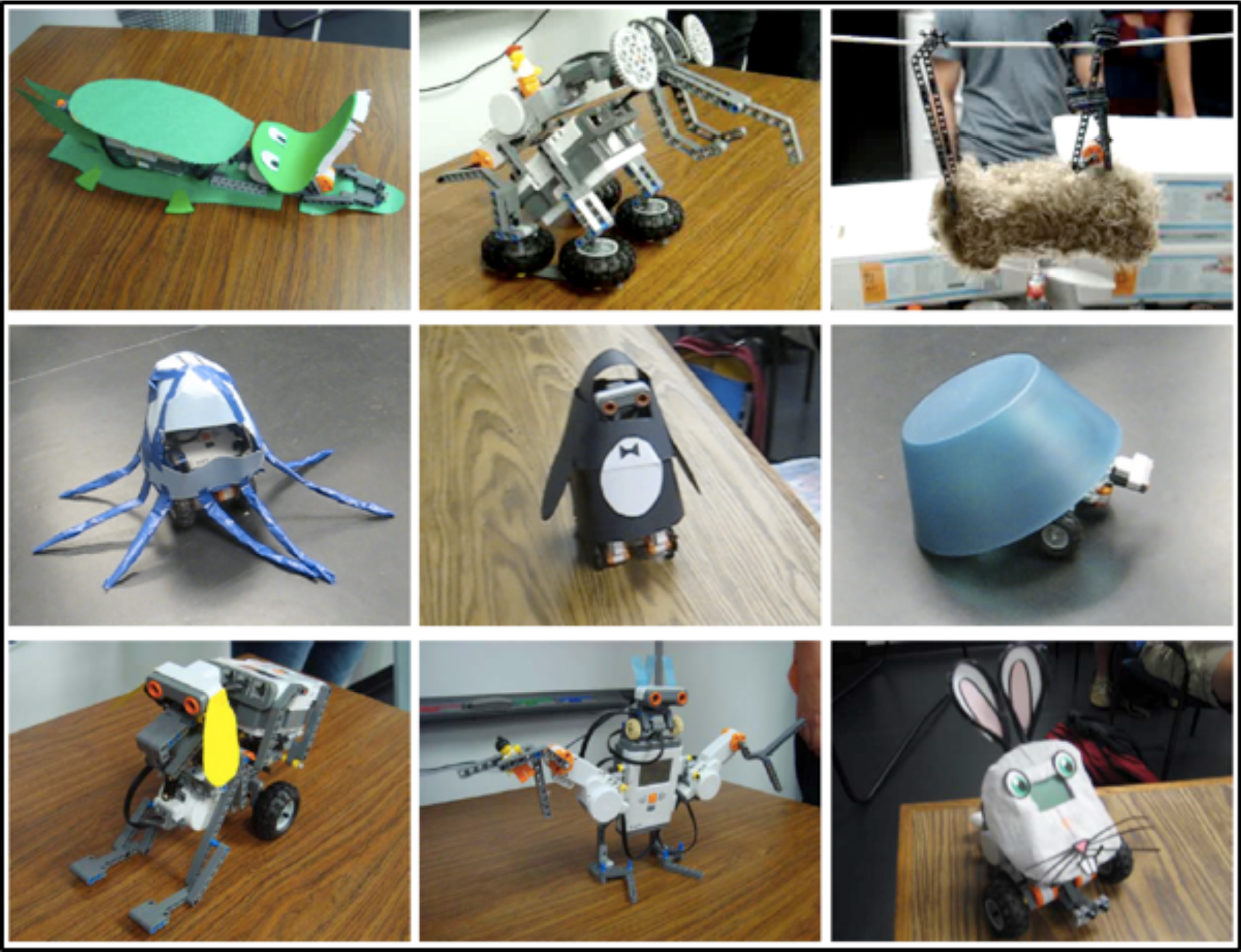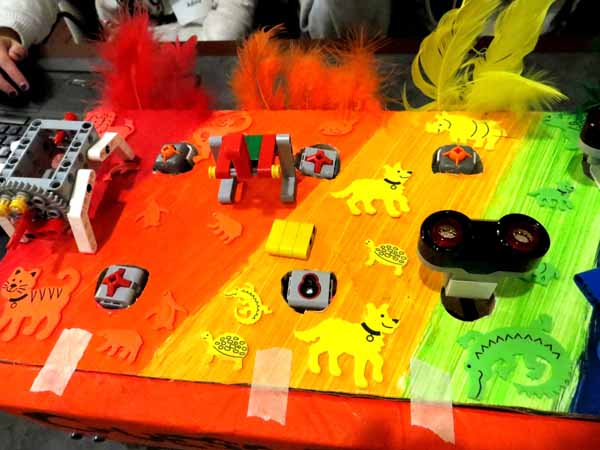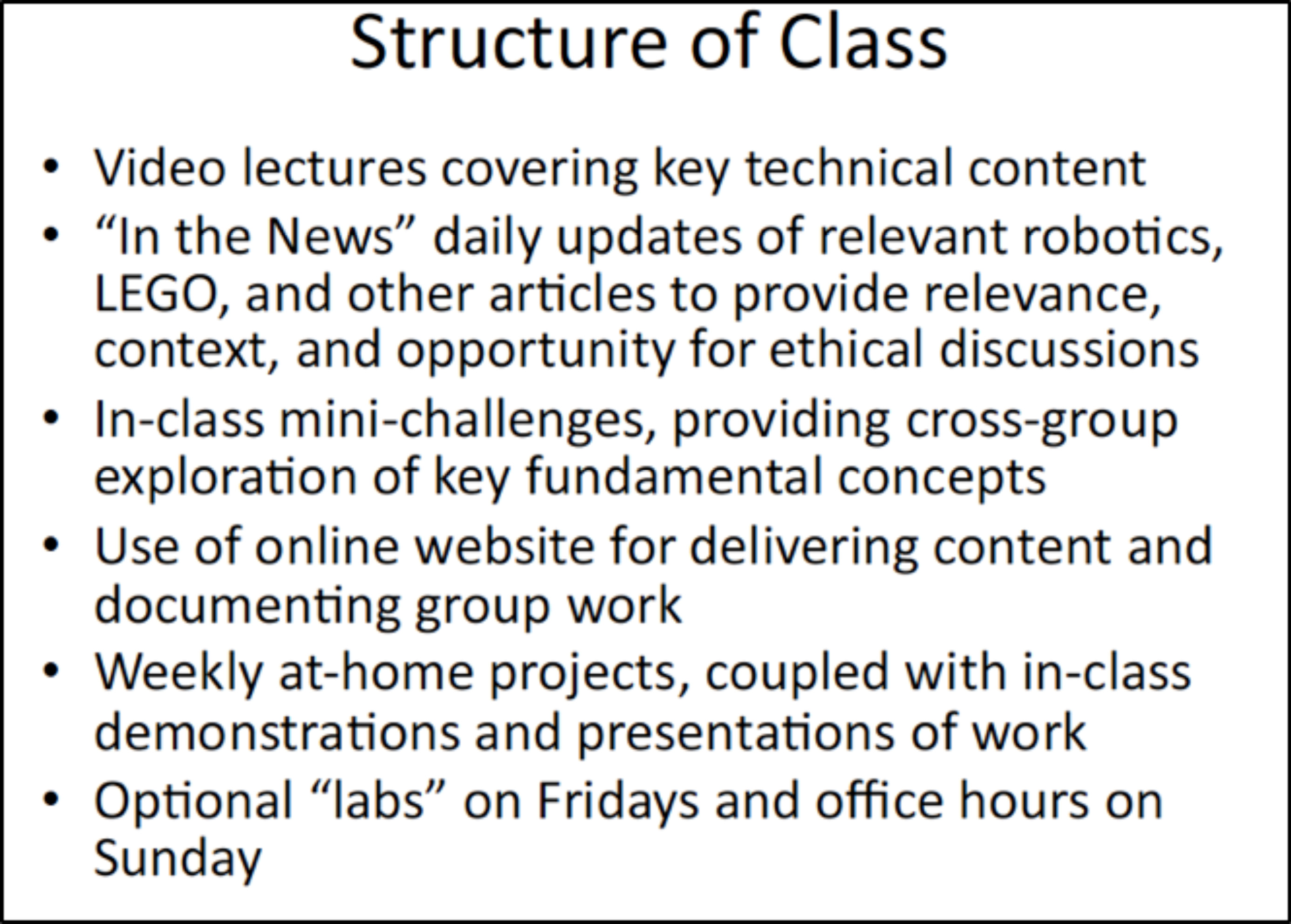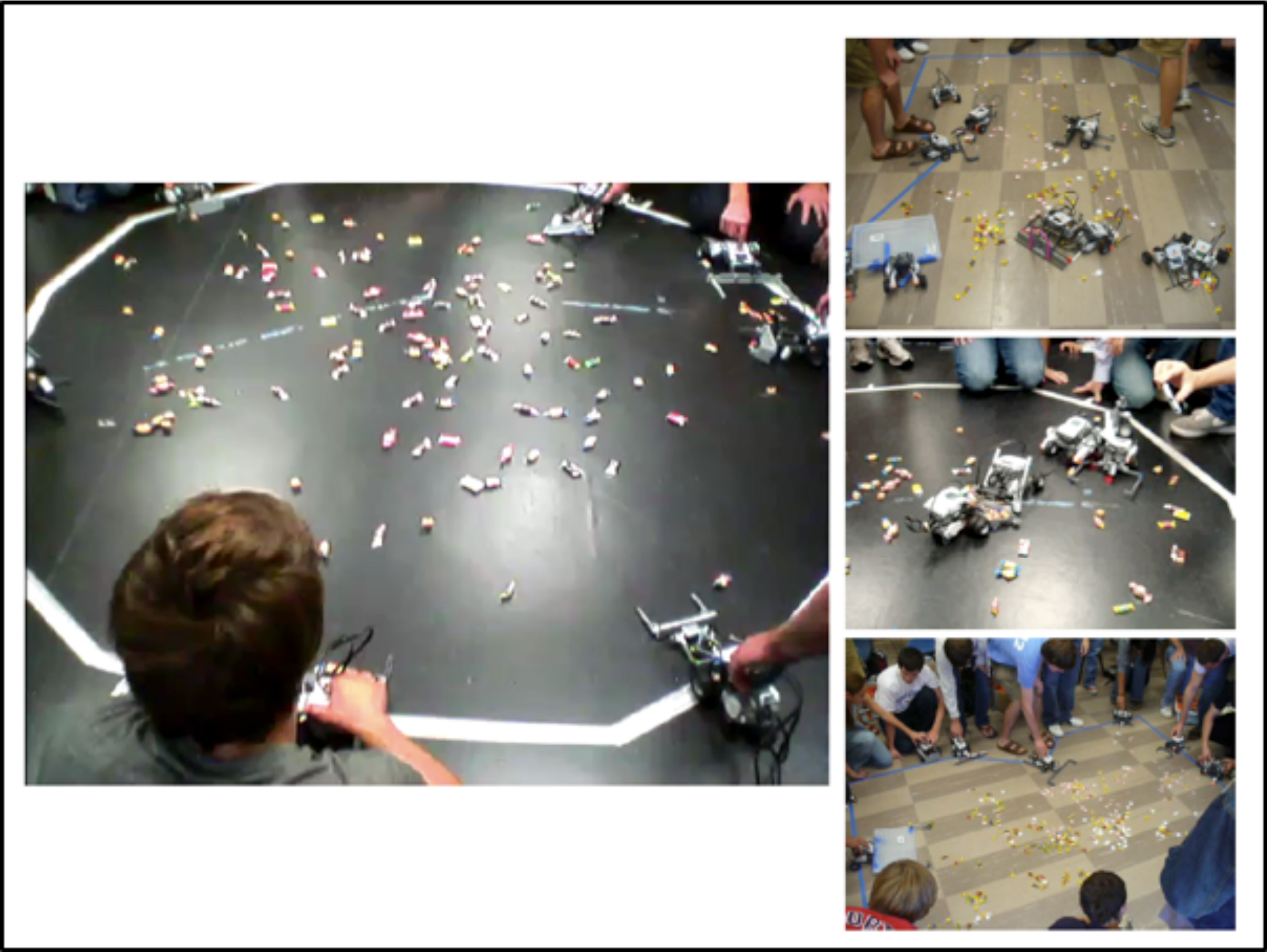Weston Middle School
Technology/EngineeringCourse Materials
Lego NxT Roboticst- Comments on Teaching Engineering egion3
What is engineering?
- How to frame problems-
- Figuring out what they want to solve
- Building a path to a solution;
- Art
- Science
- Budgets
- Constraints
How do re-align that path so they will ultimately succeed?
Students need to learn the importance of iteration, not only on the sports field but in class-so a big part of our work is how to teach an understanding of failure as a teachable moment.
Instead measuring success by everyone getting the same right answer, we measure our success by the diversity of answers that we get- a highly successful class means everyone has a different solution- so instead of everyone having my mental model, I have to learn from their mental models. Example: Silly Walks challenge.
We need students to understand that working with others is collaboration, not cheating.
Teachers should mostly be listening to students' mental models not telling students theirs.
We ask students to validate those mental models by arguing for those models, not only student-to-teacher, but student to student, through SAM animation, and share those models on Youtube—how you report your models changes everything.
Goals of Education-
- Teaching kids how to be curious- why?
- Teaching kids how to learn on their own- passion for finding answers
- How do you test whether knowledge is correct( reflection) and can be transferred to other situations
- Self-confidence( mindset)
- What causes kids to stop following directions and start engineering?
- What in the classroom causes kids to stop engineering and start following directions?
- Kids building what they see in books vs testing their own ideas.
- Classrooms should be active building, not passive listening
- There is no one way to teach science and engineering
- We want education to be based on science about how people learn, not hunches
- Teaching can be done in many different ways- lecturing, building, IR camera
- Expertise can be distributed across the classroom, with different students experts in different areas.
How do we teach students to devise innovative solutions?
We teach students by ‘throwing them in the pool’- then helping them puzzle through their authentic questions
- 1st challenge- In 20 minutes, use Legos to build something that tells something about yourself/where you come from- Japanese students built Shinto Shrine
- As a teacher, build alongside them- model the process, including its problems
- Come up with ‘stupid solutions that won’t work’
- Build a car using 10 pieces or less,
- Design a car that is the fastest to build
- Program the robot to stay on top of the table
- Devise challenges based on situations in childrens’ literature- such as students have to build a robot that re-enacts a fairy tale- Rapunzel,etc.
- Measure temperature of air vs water vs ? for 24 hours
- Swarm of robots- teacher visits each one with a flashlight- students determine the path the teacher took
- Robot takes 10 passes over a mystery black-tape letter- students have to guess the letter
Tufts Robotics Challenges:
‘Silly Walks’: The challenge is to design a vehicle that moves forward without using wheels. The secondary goal is to make sure that everything is working, from computers to this site to the NXT/EV3.( https://nxt.dreschallenges.com/?cat=3 )
‘Virtual Springs’- Build a car that follows the car in front of it using the ultrasonic and a proportional controller. Video: http://youtu.be/Tys8-F6MiQo
Robotic Animal: For this project, you are to create a robotic animal that includes “inputs” (sensors) and “outputs” (motors, or other). Try and capture the look, feel, and movements of the animal you choose. You animal must also react appropriately to some inputs.

Robotic Creatures- Tufts
Puppet Show: For this project, your team is to create the robotic puppet(s) needed for your puppet show . Thus, while you are designing, building, and programming your puppet, think about the context in which it will be used, and let the eventual puppet show you will perform influence the style, structure, and design of your robotic puppet(s).
Halloween Haunted House
Playful Creations: Create an interactive toy/game for children—7 year olds will be the judges!

Tufts Capstone projects- started with Veterinary school presentation- horses whose legs don’t heal- need to be kept at 3 degree level.
Organizing Parts
Method 1: Kits
- More accountability for students
- Everyone has same access to pieces
- Intensive Sorting
- Easier to sort
- Students have access to all pieces
- Can run out of limited pieces
- Essential/limited pieces, everything else in bins
- Ideal - 2 students : 1 kit : 1 computer
- Give students roles - programmer, builder, designer, spokesman - rotate roles
- Design Contracts - I build this part, you build this part
- Timers - 5 minutes on computer, then switch
- Gender Issues- projects involve social and caregiving goals as well as mechanical goals
- In general, same sex pairs work better
- Girls tend to plan before building
- Boys tend to grab pieces and start building without a plan
- Types of activities
- Variety - not all cars or animals
- Consider Competition carefully
- Students writing/video-ing regular reflections on their design and programming decisions and process very valuable-
- Helps them to think through the design process
- Provide ready activity for students if partner is ‘hogging’ the project-helps in classroom management
- Aids in assessing individual effort and learning in group projects
- Helps teacher to evaluate student thinking/issues
- See Video example: Grade 7 Robotic Zoo: http://youtu.be/ZlDFMaAtEAs
- See more information on journaling using Ipads/Macbooks at http://www.weston.org/schools/ms/technology/robotics/pages/ipadjournaling.htm
If students are coming back at lunch to work on their project, and upset that the period is over, the project is successful-
- Are the students engaged in the project? Do they want to work extra?
- Do they display initiative in implementing designs and programs, setting goals and displaying persistence?
- Social Scaffolding- Do they request or offer assistance, and discuss their work and that of others?
- Development of Understanding- Do they show excitement? Do they express the technical issues?

Links:
Made With Code- Limor Fried of Adafruit
Video:Teaching Engineering With a Camera and a Brick or Two
Learning STEM in the Classroom
EditRegion5
TTufts "Candy Push" challenge
Revised
January 2015 by Jonathan Dietz,
dietzj@weston.org